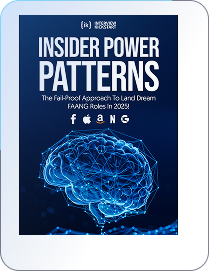Preparing for Multiple Choice Questions (MCQs) in algorithm design and analysis is a crucial step for aspiring software engineers and computer science students. It helps you sharpen not only problem-solving skills but also boosts your confidence to sit in those tough interviews.
The MCQs we have curated cover a broad range of concepts primarily in algorithms and data structures. These questions are foundational to computer science and software engineering. These MCQs include questions on sorting algorithms, for instance, bubble sort, quick sort, and heap sort, including their time and space complexities. You will also find questions on merge sort.
The list also includes questions on graph processing, such as Dijkstra’s algorithm for shortest paths, Bellman-Ford algorithm, Prim’s and Kruskal’s algorithm for minimum spanning trees, and algorithms for graph traversals.
Additionally, you will find MCQs on complexity analysis, data structures, dynamic programming, algorithmic strategies, and so on. Overall, the MCQs have been curated to help you test your knowledge of algorithmic techniques and data structures.
Also Read: Best Companies to work for as a Software Engineer
So, let’s dive straight into the interview questions to test your fundamentals.
for i in range(n):
       for j in range(n):
           print(i, j)
Answer: C. O(n^2)
Answer: C. Bubble Sort
Answer: A. O(n)
Answer: B. Queue
Answer: B. O(nlogn)
Answer: A. Dijkstra’s Algorithm
Answer: B. When there are frequent insertions and deletions
Answer: B. Guarantees optimal solution
Answer: C. Tarjan’s Algorithm
Answer: B. O(m + n)
Answer: A. O(2^n)
Answer: C. Kadane’s Algorithm
Answer: C. When there are frequent insertions and deletions
Answer: C. Topological Sort
Answer: D. O(nloglogn)
Answer: B. Bellman-Ford Algorithm
Answer: D. Prim’s Algorithm
Answer: A. O(n)
Answer: B. Merge Sort
Answer: D. Dynamic Programming
Answer: C. Heap
Answer: A. O(n)
Answer: D. Backtracking
Answer: C. When the graph is very deep and solutions are rare
Answer: A. Divide and Conquer
Self-learning is good, but a dedicated program can enhance your learning through a structured approach. This ensures that you cover all necessary topics systematically. Our Early Engineering program has been strategically curated with the expert guidance to help you familiarize with questions top companies ask.
The program offers hands-on projects and mentorship to understand complex concepts deeply. The course suits software engineers who want to specialize in DSA and problem-solving.
What is Pseudocode?Â
Pseudocode is a mixture of natural and programming language-like constructs.
What are the common types of algorithm problems?Â
The common problems include:
What is Best Case Efficiency ?Â
It is the best-case efficiency of input of size n.
Related Articles:Â
Attend our free webinar to amp up your career and get the salary you deserve.

693+ FAANG insiders created a system so you don’t have to guess anymore!

100% Free — No credit card needed.

Time Zone:






Get your enrollment process started by registering for a Pre-enrollment Webinar with one of our Founders.

The 11 Neural “Power Patterns” For Solving Any FAANG Interview Problem 12.5X Faster Than 99.8% OF Applicants
The 2 “Magic Questions” That Reveal Whether You’re Good Enough To Receive A Lucrative Big Tech Offer
The “Instant Income Multiplier” That 2-3X’s Your Current Tech Salary

The 11 Neural “Power Patterns” For Solving Any FAANG Interview Problem 12.5X Faster Than 99.8% OF Applicants
The 2 “Magic Questions” That Reveal Whether You’re Good Enough To Receive A Lucrative Big Tech Offer
The “Instant Income Multiplier” That 2-3X’s Your Current Tech Salary
Just drop your name and email so we can send your Power Patterns PDF straight to your inbox. No Spam!
By sharing your contact details, you agree to our privacy policy.
Time Zone: Asia/Dhaka

We’ve sent the Power Patterns PDF to your inbox — it should arrive in the next 30 seconds.
📩 Can’t find it? Check your promotions or spam folder — and mark us as safe so you don’t miss future insights.
We’re hosting a private session where FAANG insiders walk through how they actually use these Power Patterns to crack interviews — and what sets top performers apart.
🎯 If you liked the PDF, you’ll love what we’re sharing next.
Time Zone:

